
Cristi
Rinklin’s Ecologies of Perception | By Lynne CooneyCristi Rinklin’s paintings interrogate both the subtle and profound changes to the environment due to human activity. The theorist, Nicholas Mirzoeff, suggests that to visualize the Anthropocene—the debated term used to denote our current geological period triggered by the burning of fossil fuels—is to invoke the aesthetic (2014: 213). Rinklin renders landscapes at the edge of cataclysm; the impacts of people intimated by ruinous terrains that appear barely inhabitable. Saturated in otherworldly color, her aestheticized and tactile compositions are ruptured by fragments or fractures that register across the painting’s surface as digital glitches, spatial reverberations, or violent cracks that spread across the substrate like broken glass. The intentional reference to screen technologies suggests how media has altered our perceptions of the landscape, particularly in a time of ecological crisis. The interplay of lens capture, digital manipulation, and the materiality of paint serve to question what we think we see or sense, shifting our basis of reality to something unknown or unimaginable.
Even from the late 18th to the mid-19th centuries, painters have aestheticized environmental changes wrought by industrialization—such as John Constable’s haunting seascapes populated by steamships or Claude Monet’s impressionistic views of cities bathed in acrid smog. These painters expressed the spectacular grandeur of industrial progress in that era that was likely tangibly felt (such as the physical effects of industrial grime and smoke, etc.) but not broadly grasped in visual terms. Today, our sensorial and perceptual systems are being refashioned through images to such an extent, write scholars Heather Davis and Etienne Turpin, that we daily visualize the sublime (Davis and Turpin 2020: 11). Rinklin destabilizes our perceptual and sensorial groundings of the contemporary landscape mediated by 21st century technologies. And if climate change, and undoubtedly our media culture, are characterized by speed, the artist’s embrace of the analog slowness of painting envisages a painterly sublime that wholly reimagines the contemporary landscape not solely as a site of ecological precarity, but a space rich with aesthetic possibilities.
That Rinklin chooses painting over photography or film (even though she uses screen captures as her source images), for example, is to recognize the aesthetic power of the medium. Sumptuous surfaces, rich colors, tactile drips and pours that slip towards the edges of the frame (an additive strategy of affixing pieces of acrylic medium to the painted surface), illustrate how Rinklin adeptly uses the tactility of painting to construct meaning. To make a painting beautiful is to open a doorway into its complex layers of signification. In other words, Rinklin’s paintings not only speak to what is recognizable (such as plants, trees, etc), but what is unseen, invisible, or lost. Beauty embodies a space of mourning and loss
of the natural world. Yet, Rinklin invites new imaginaries that refuse a totalizing view of the future. Her paintings envision the landscape as reconfigured, one that necessitates a multi-sensory and multi-modal aestheticization constructed across artistic and digital platforms.
Davis, Heather an Etienne Turpin, eds. Art in the Anthropocene: Encounters Among Aesthetics, Politics, Environments and Epistemologies. London: Open Humanities Press, 2015.
Mirzeoff, Nicholas. “Visualizing the Anthropocene.” Public Culture, Vol 26, No 2 (73) (Spring 2014): 213–232.
Cristi Rinklin | Biographical Statement
Cristi Rinklin’s paintings, installations, and works on paper explore the back-and-forth between technological and analog simulations of the landscape. Rather than faithful representations of the natural world, her work manifests as illusory composites; environments situated between geographical, virtual, and psychic space.
Rinklin received her MFA from the University of Minnesota, Minneapolis in 1999, and her BFA in painting from Maryland Institute, College of Art in 1989. She has exhibited her work in galleries and museums throughout the United States for over twenty-five years. She has had numerous national and international exhibitions in galleries and museums, including solo exhibitions at the Newport Art Museum, the Fitchburg Art Museum, and the Currier Museum of Art, and her work has been including solo and group exhibitions in Boston, New York, Los Angeles, Minneapolis, Baton Rouge, Seattle, Rome, Florence, and Amsterdam. Her paintings have been included in the 2010 and 2012 Northeast edition of New American Paintings. Rinklin is the recipient of grants from the Massachusetts Cultural Council, the Berkshire Taconic Artist’s Resource Trust and the Jerome Foundation Fellowship. She has been awarded residencies at the American Academy in Rome Visiting Artist and Scholar program, and the Sam and Adele Golden Foundation for the Arts. Her work is represented in Boston by Ellen Miller Gallery. Rinklin is currently a Professor at the College of the Holy Cross, in Worcester, MA. She lives and works in Boston, Massachusetts.

... a painterly sublime that wholly reimagines the contemporary landscape not solely as a site of ecological precarity, but a space rich with aesthetic possibilities.
 Golden Hour, 2022, oil and acrylic on aluminum, 54 x 42 inches
Golden Hour, 2022, oil and acrylic on aluminum, 54 x 42 inches

Revenant, 2024, oil and acrylic on aluminum, 48 x 72 inches
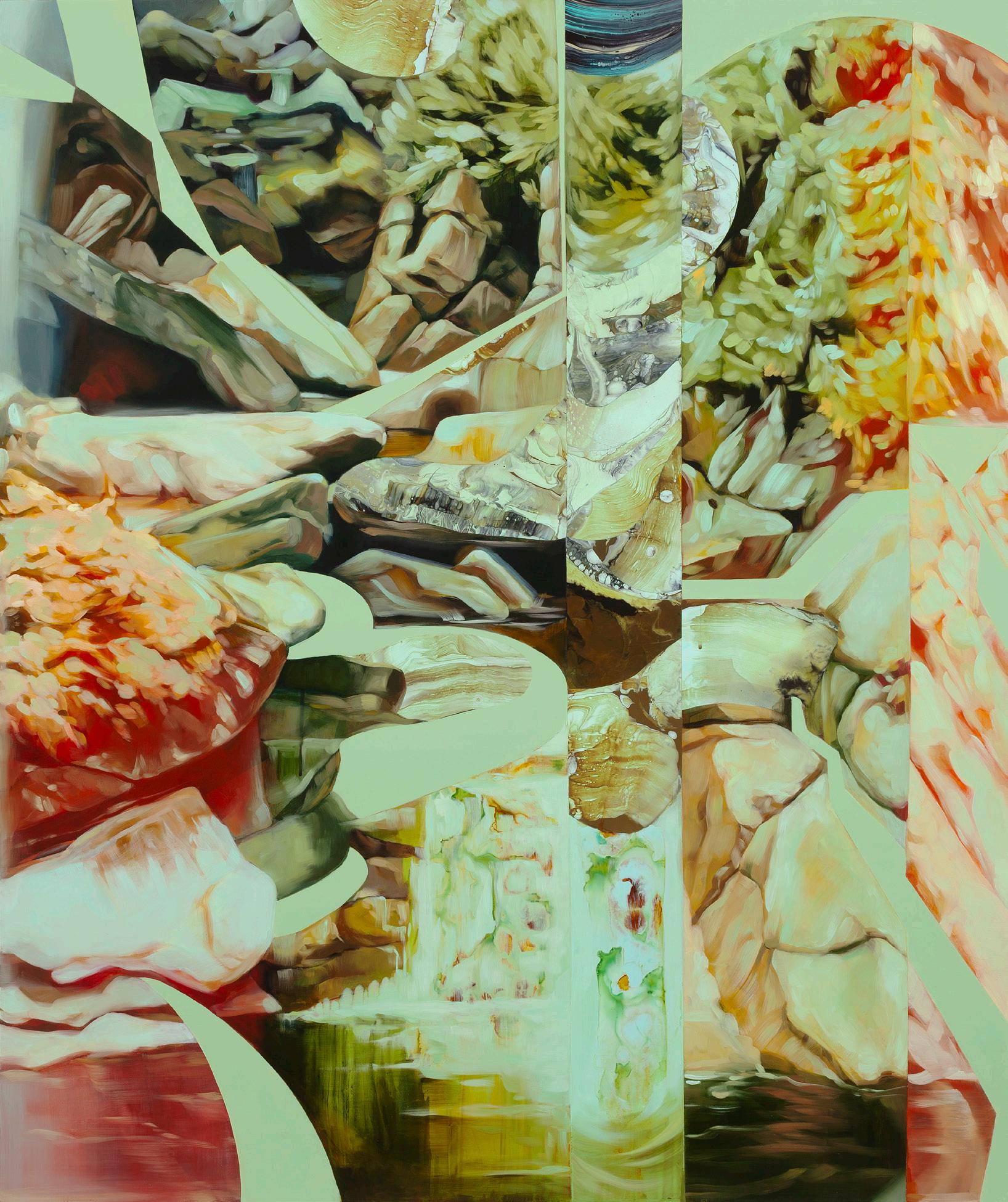 Fracturation, 2023, oil and acrylic on aluminum, 48 x 40 inches
Fracturation, 2023, oil and acrylic on aluminum, 48 x 40 inches
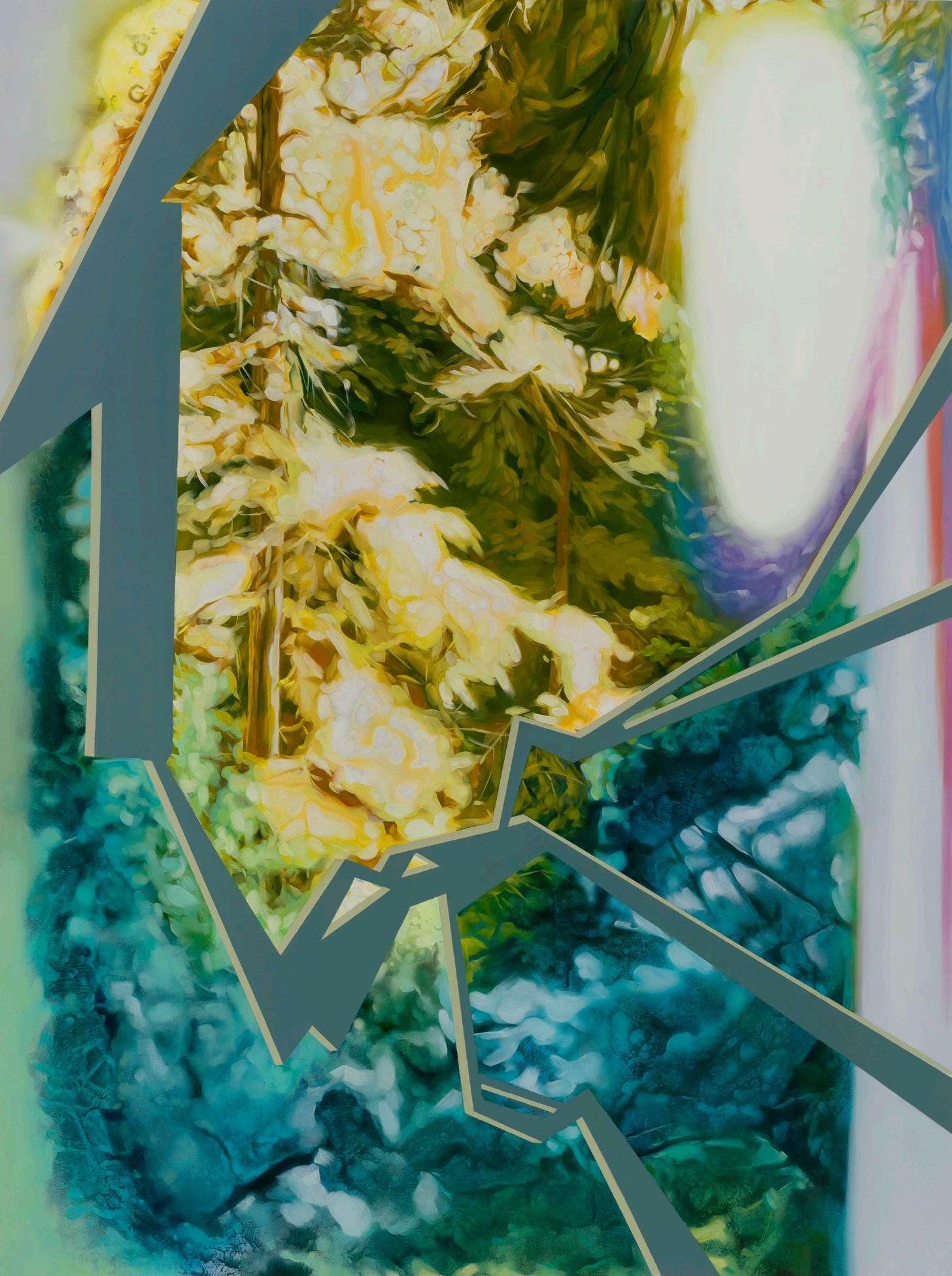
Forever In Suspension, 2022, oil and acrylic on aluminum, 64 x 48 inches
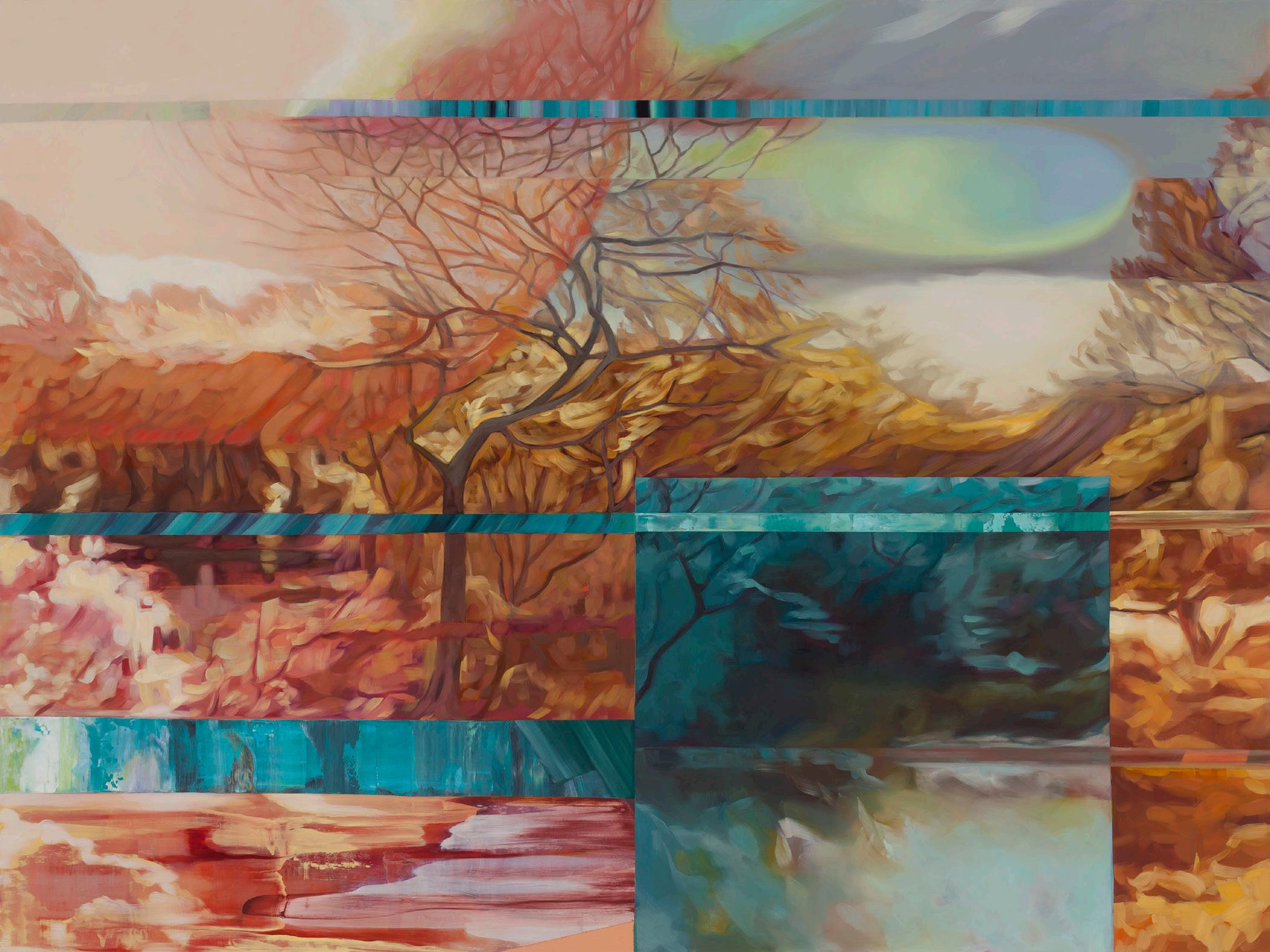
Conquered, 2023, oil and acrylic on aluminum, 48 x 64 inches
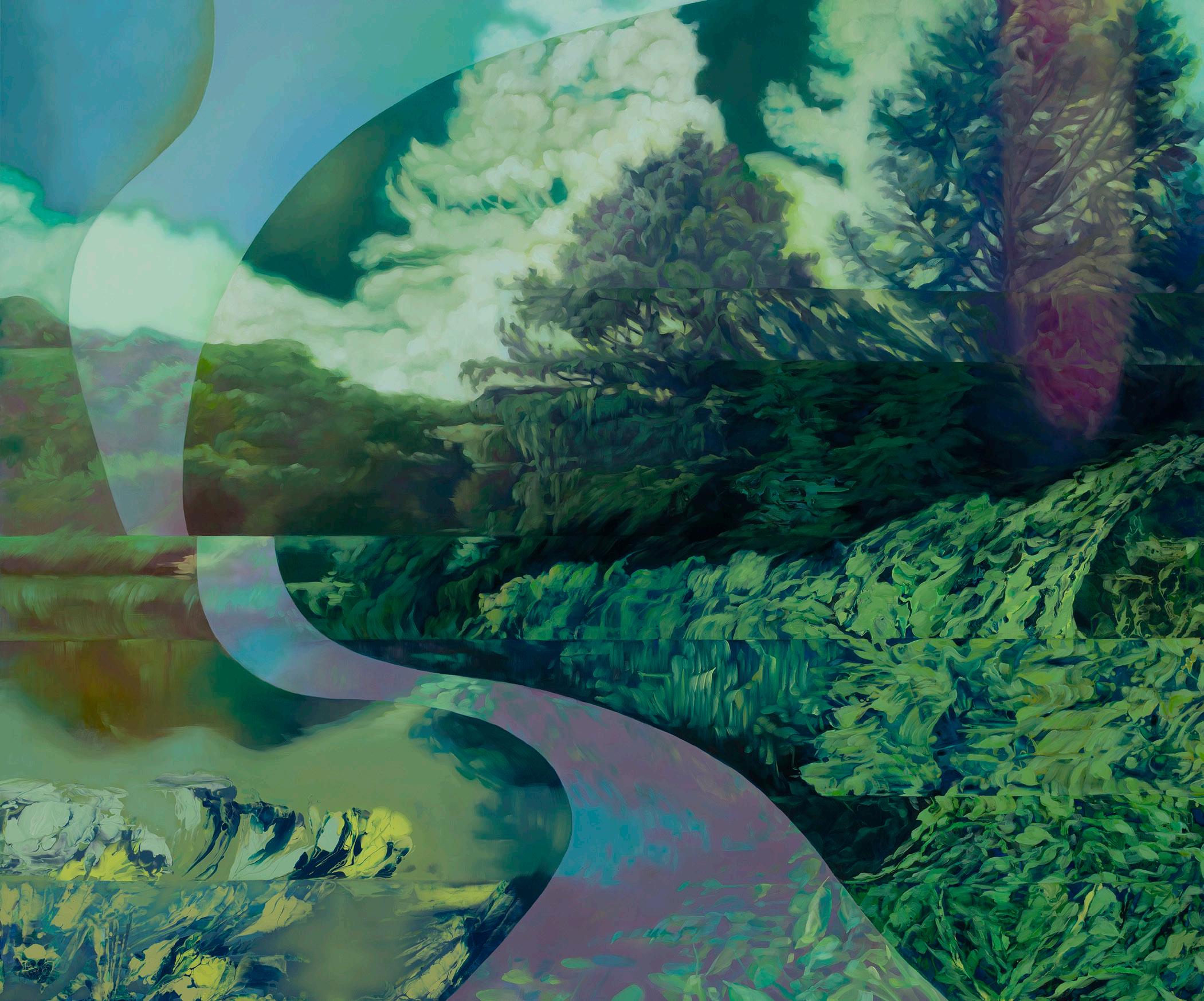
To Be Determined, 2024, oil and acrylic on aluminum, 60 x 72 inches
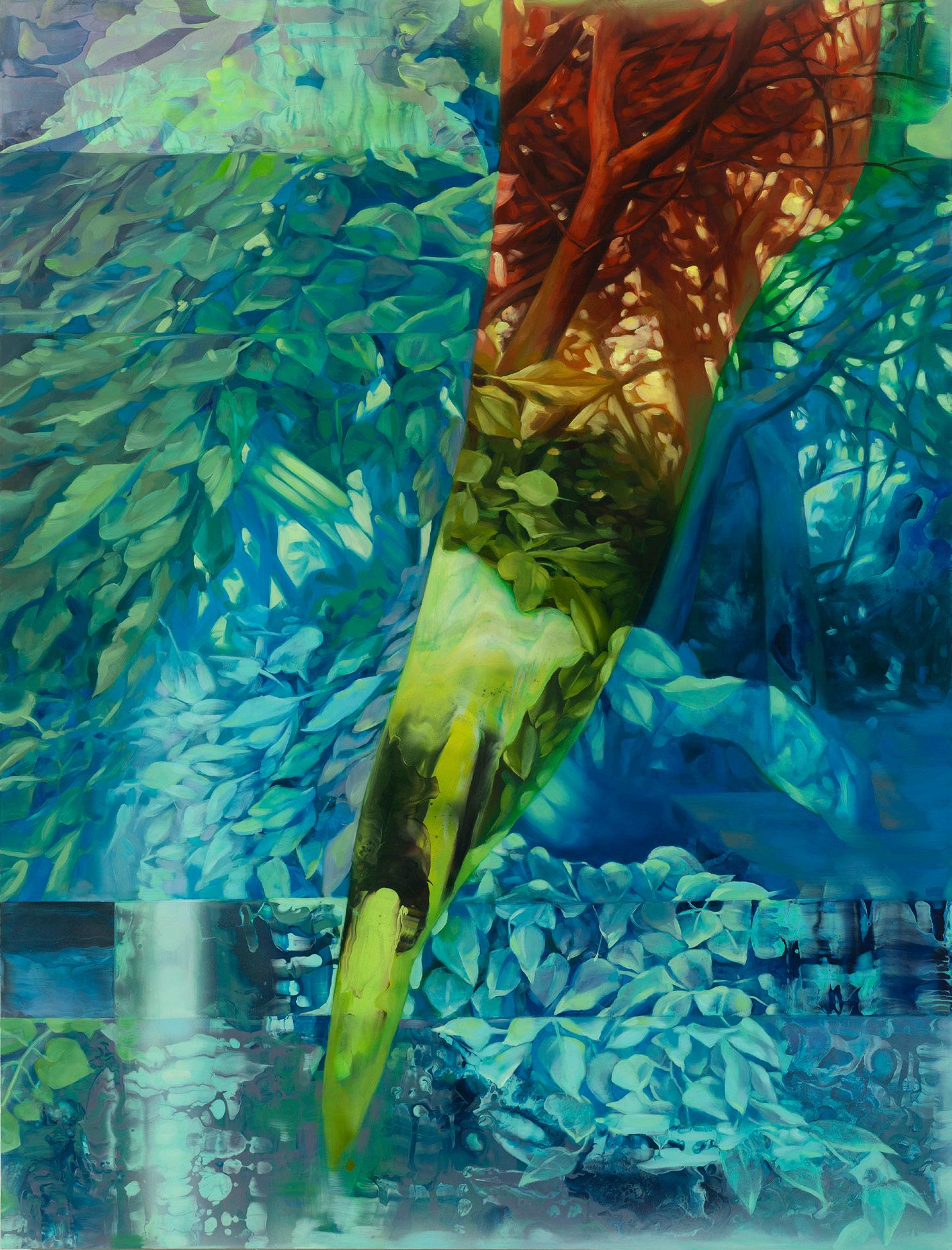
Chrysalis, 2023, oil and acrylic on aluminum, 40 x 30 inches
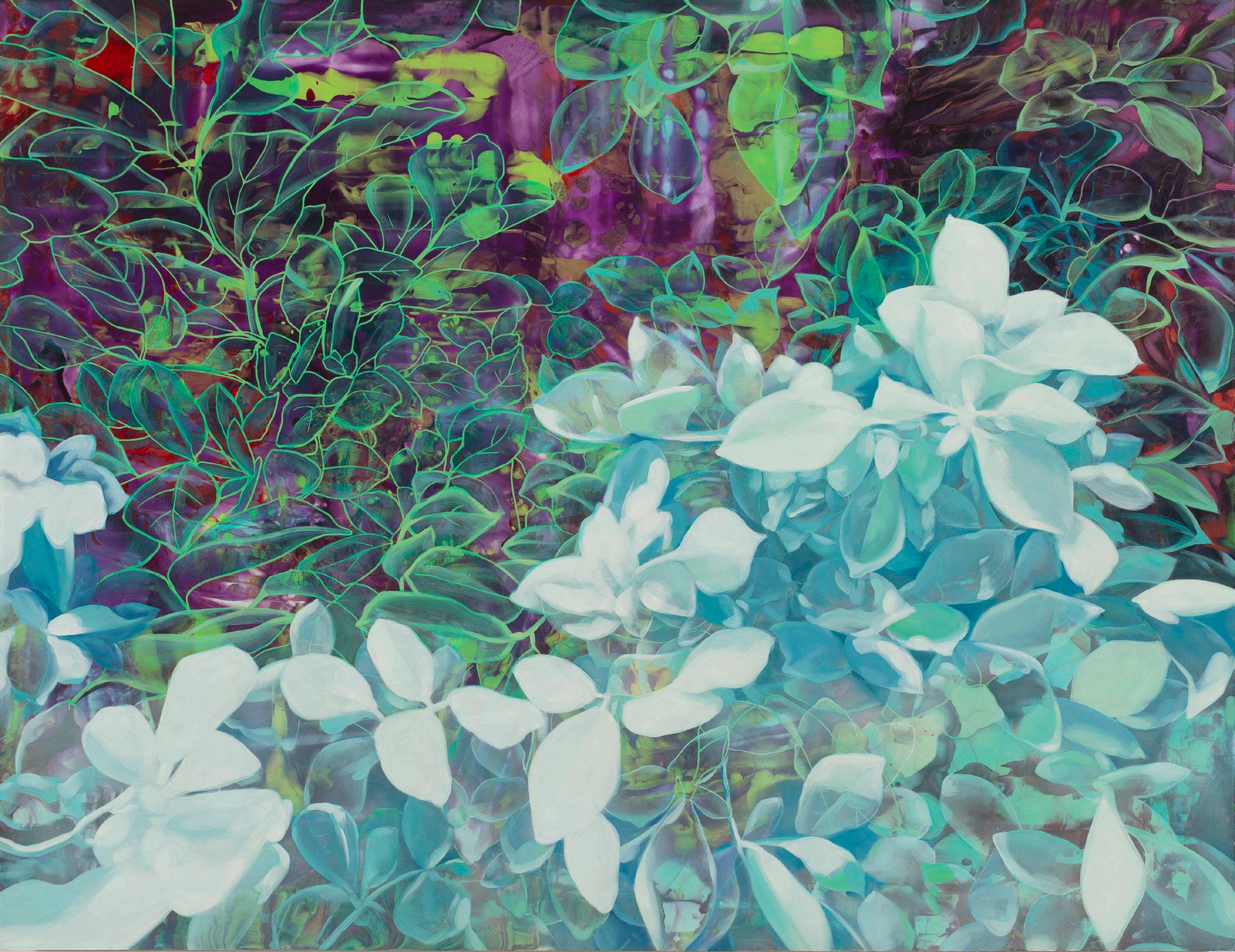
Circle of Life, 2023, oil and acrylic on aluminum, 30 x 40 inches
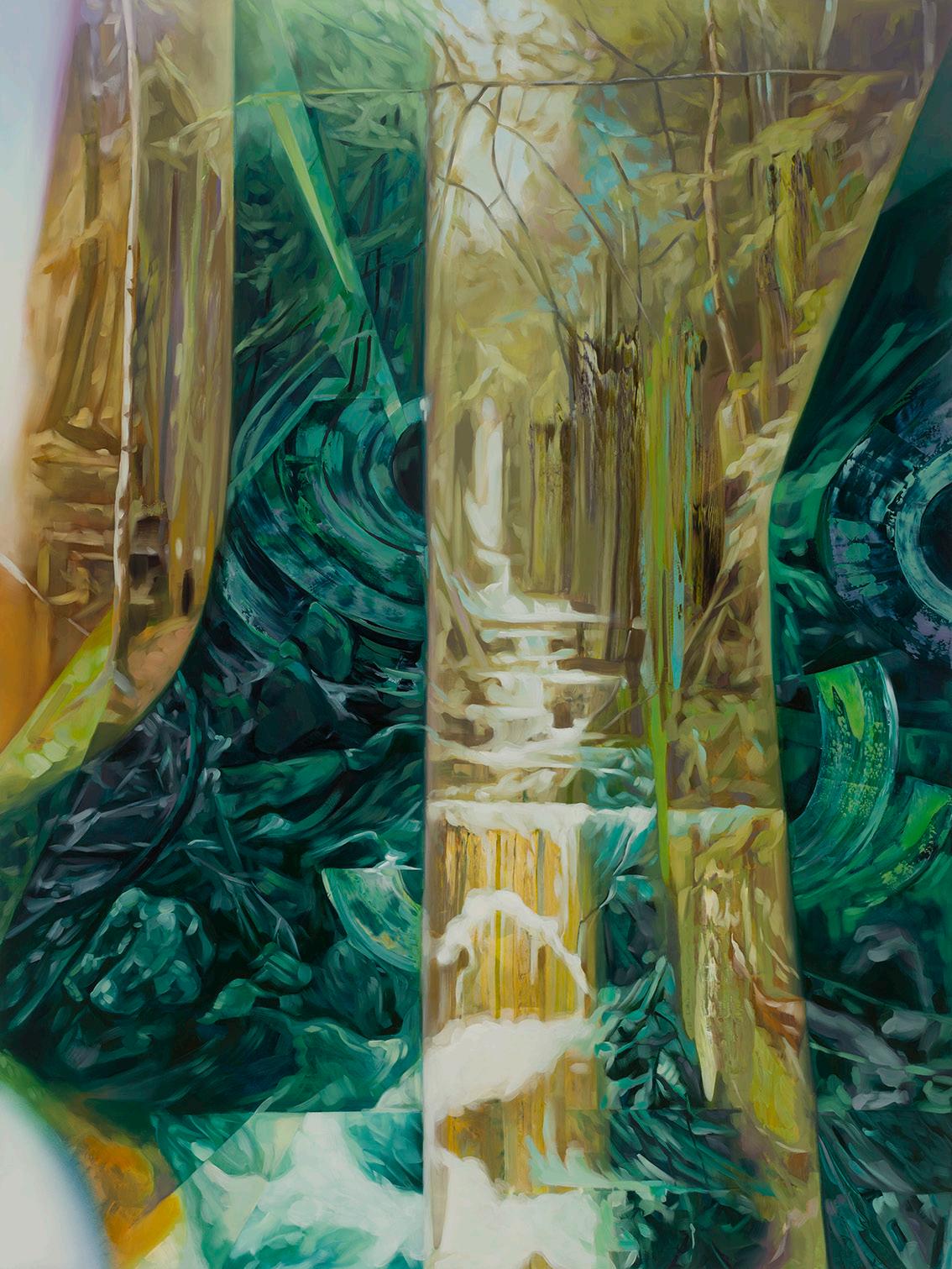
How do you bear the full weight?, 2022, oil and acrylic on aluminum, 64 x 48 inches
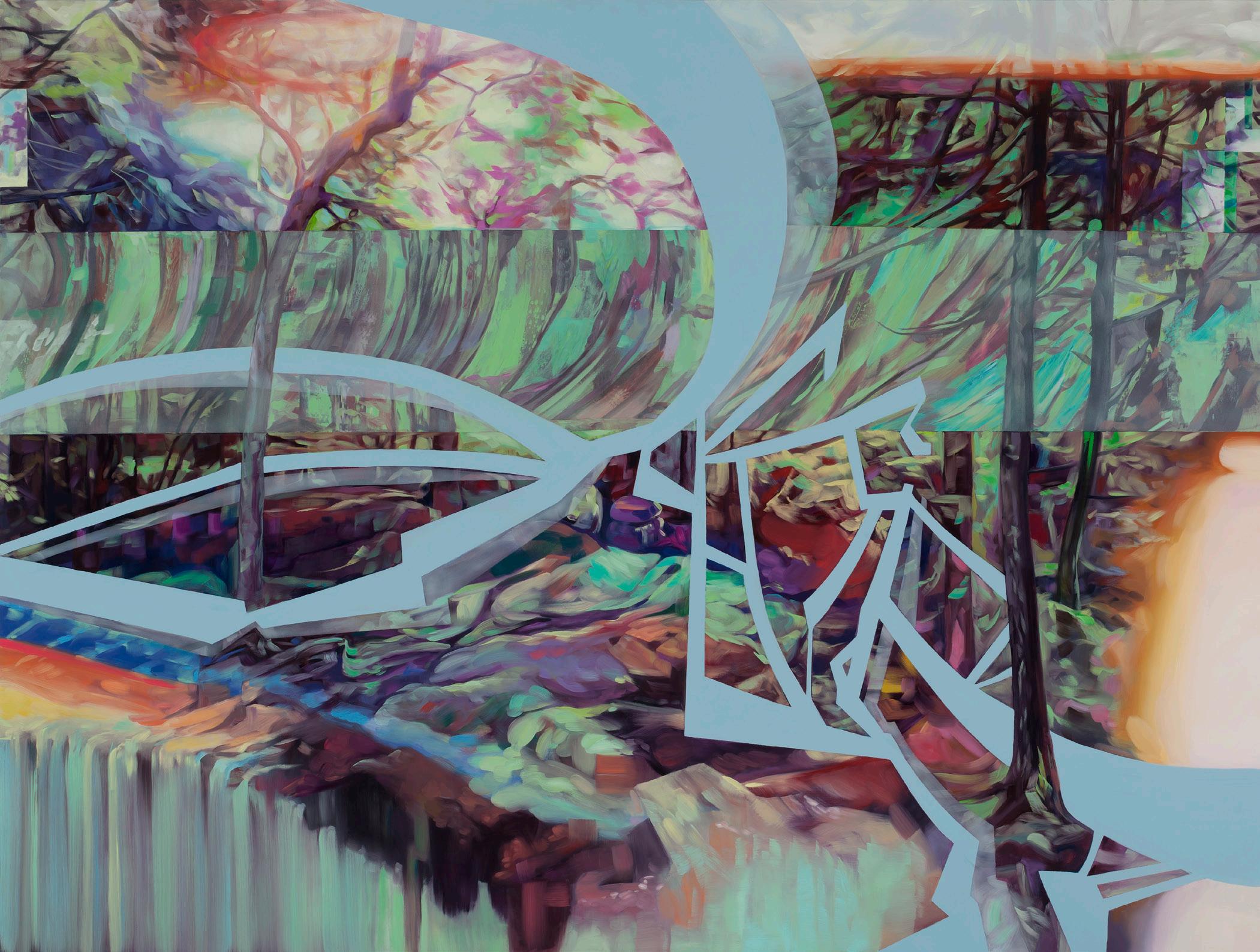
This Feeling Flows Both Ways, 2022, oil and acrylic on aluminum, 54 x 42 inches
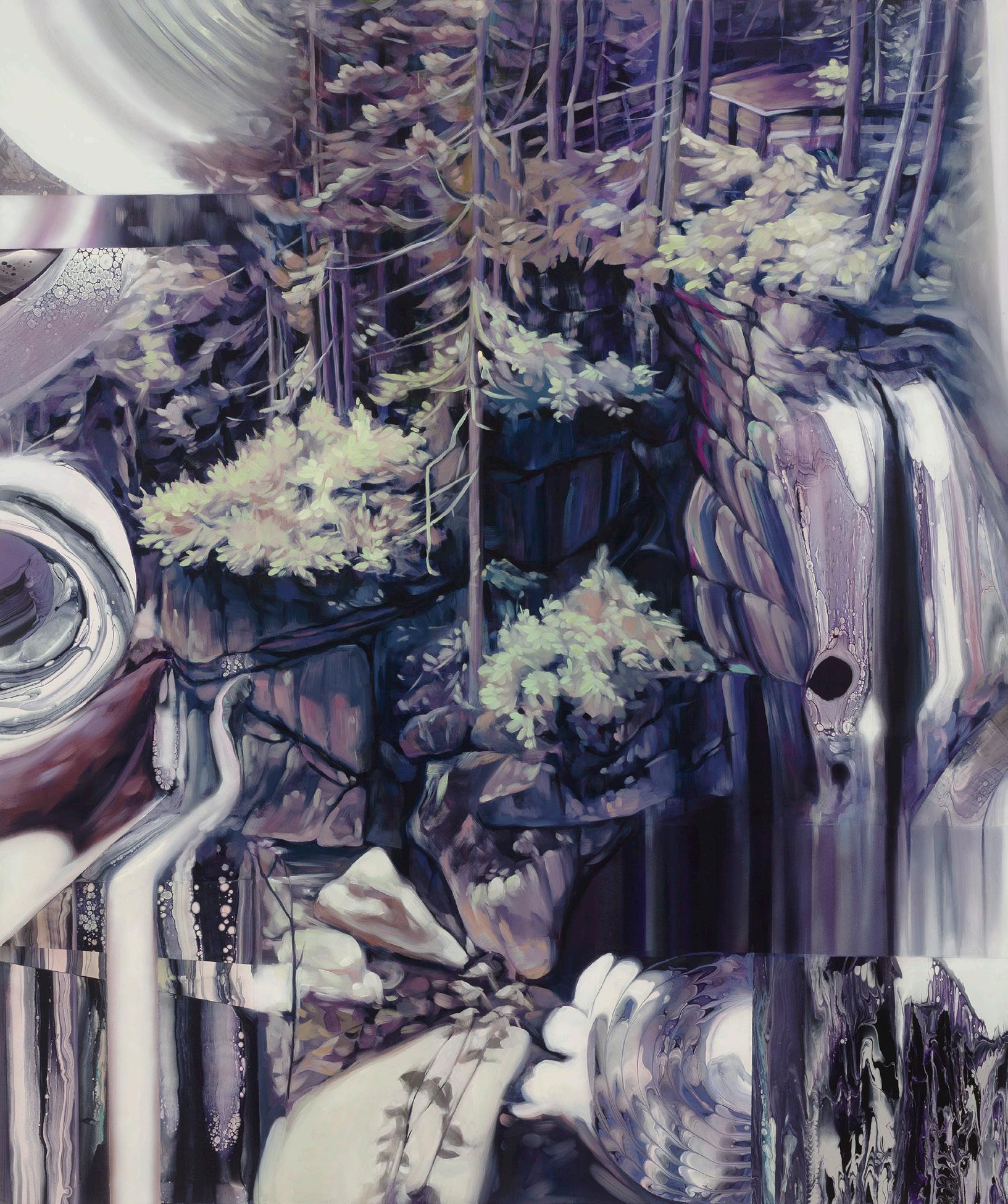
Underland
, 2023, oil and acrylic on aluminum, 48 x 40 inches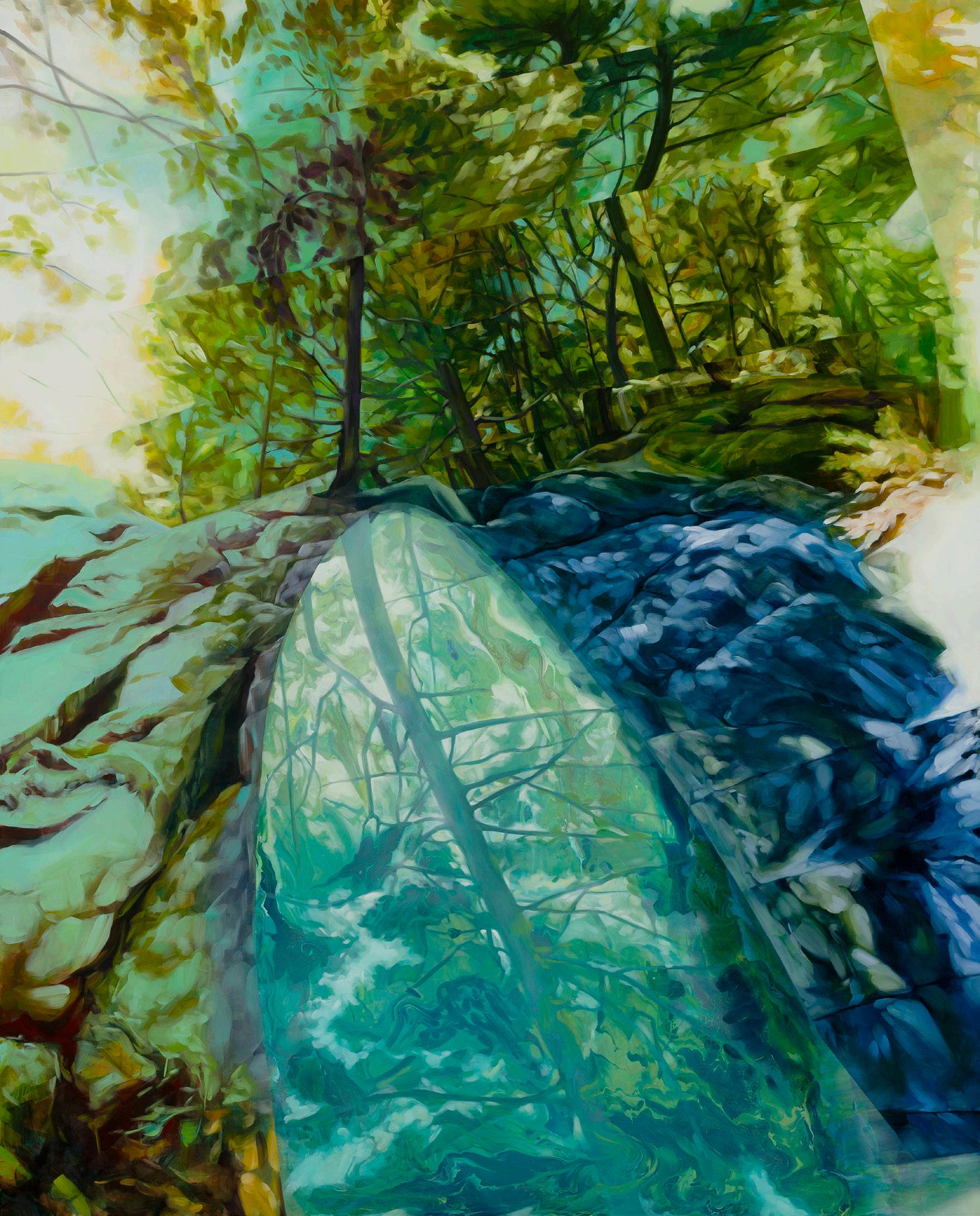
Purgatory, 2024, oil and acrylic on aluminum, 60 x 48 inches
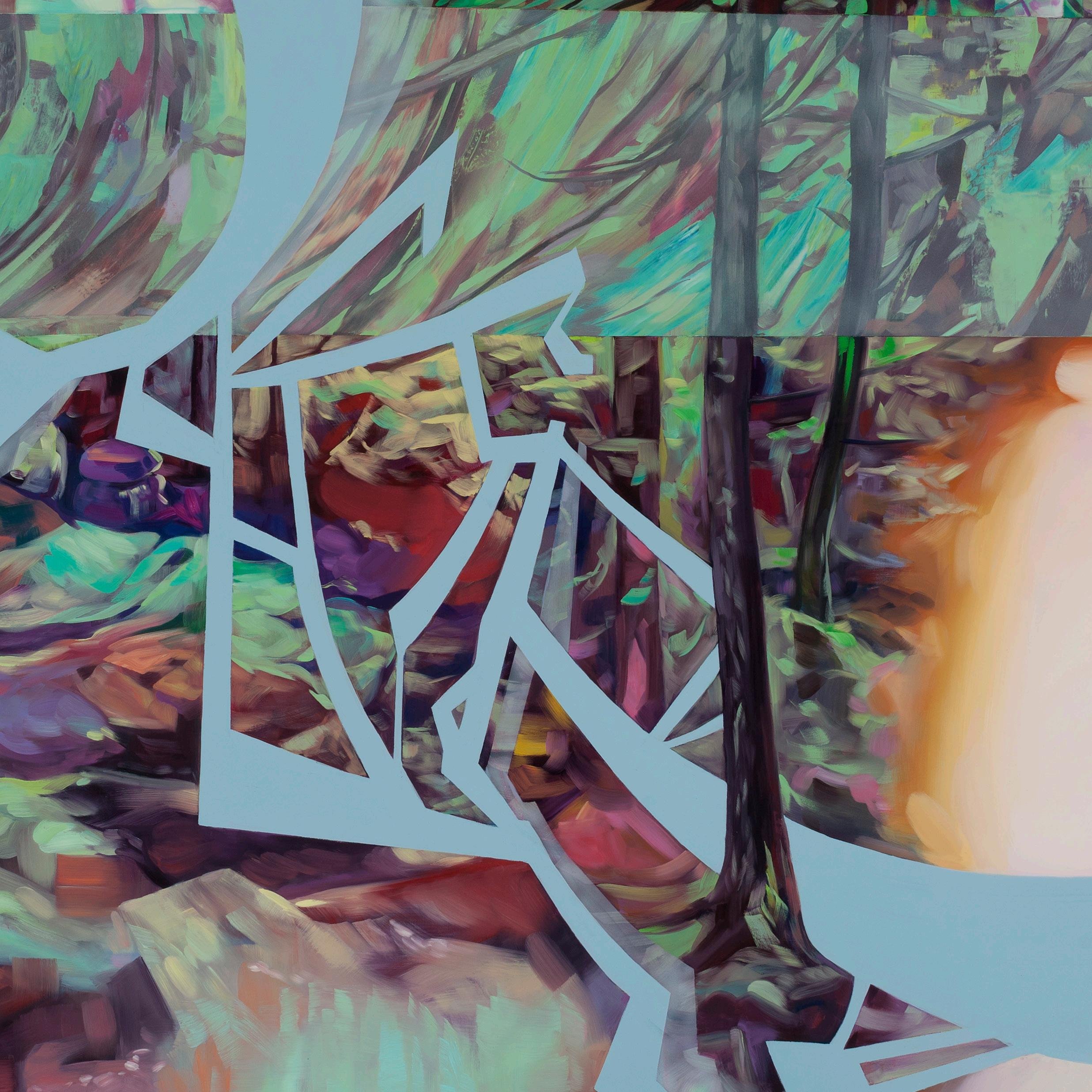
... aestheticized and tactile compositions are ruptured by fragments or fractures that register across the painting’s surface as digital glitches, spatial reverberations, or violent cracks that spread across the substrate like broken glass.
Curriculum Vitae
2019 - 2020 Dot Now, Group exhibition, University Hall Gallery, UMass Boston
2018 How’s Your Weather? Artists Respond to Climate Change and Sustainability. Group Exhibition, Grimshaw-Gudewicz Art Gallery, Bristol Community College, Fall River, Massachusetts
2017
2016
2015
Space as Narrative, Concord Center for Visual Arts, Concord, Massachusetts
Groundswell, University of New Hampshire Museum of Art, Durham, New Hampshire
Massachusetts Cultural Council 2016 Artist Fellows, Newton Art Center, Newton, Massachusetts
Naturetech, Nathalie Miebach, Cristi Rinklin and Michelle Samour, Fitchburg Art Museum, Fitchburg, Massachusetts
Overgrowth, DeCordova Museum and Sculpture Park, Lincoln, Massachusetts
This is Boston, Not L.A., Zevitas Marcus Gallery, Los Angeles
Collaboration: The Artist and the Land, Sharon Arts Center, Peterborough, New Hampshire
2014 Fore-casted; Eight Artists Explore the Nature of Climate Change. Gallery 360, Northeastern University, Boston
Visionary Vistas, Stonehill College, Easton, Massachusetts
2013 Boston-Como: More than and art exchange, Spazio Natta, Como, Italy
2012 Group exhibition, Collectico Gallery, New York
Supersaturated, Pigment and Pattern, Schweinfurth Memorial Art Center, Auburn, New York
<1-90>, Seven Artists Working in Boston, Prole Drift Gallery, Seattle
Fresher Paint, Rockland Center for the Arts, West Nyack, New York
2011 Super-Saturated, Pigment and Pattern, Kenise Barnes Fine Art, Larchmont, New York
Artisti degli Residenzia della Villa Palmarino, Villa Palmarino Gallery, Florence, Italy
2010 Behind the Image, Center for Art and Theater Contemporary Gallery, Georgia
Southern University, Statesboro, Georgia
2008 This is Boston, Not LA, LaMontagne Gallery, Boston
Pretty Things, ArtSpace, New Haven.
One Night Only: Edges and Boundaries, curated by Tom Jancar and Mary Lynne Mc
Corkle, 3875-1204 Gallery, Los Angeles
WorkBooks, Memorial Library Special Collections, University of Madison, Wisconsin
The Digital View, Arti et Amicitiae. Amsterdam, Holland
2007
Big Bang! Abstract Painting for the 21st Century, DeCordova Museum and Sculpture Park, Lincoln, MA. January-April
2006 Heidi Hove/Cristi Rinklin, Rhys Gallery, Boston
Paramnesiac Landscape, Group exhibition curated by Robin Reisenfeld, New York Center for Arts and Media, New York
2005
$ome Color, Boston Art Windows Project, Group exhibition of installations in commercial windows of downtown Boston.
Colorfixation, Group exhibition, ABWO gallery, Rome, Italy
Ghosts in the Machine, two-person exhibition, Evos Art Center, Lowell, Massachusetts
2004 and now they aren’t but they are, Group exhibition, Gregory Lind Gallery, San Francisco
Drawing: Seven Curatorial Responses, Group invitational exhibition, Katherine E. Nash Gallery, University of Minnesota, Minneapolis
2004 Overlay, Group exhibition of collaborative prints and drawings, Commonwealth Gallery, Madison.
2003
Inverted Worlds, Group Exhibition, Untitled (Space) @ Artspace, New Haven
29th Bradley National Print and Drawing Exhibition, Bradley University, Peoria. Honorable Mention Award
2001 In Situ, three person exhibition, Minnesota Artist’s Exhibitions Program Gallery, Minneapolis Institute of Arts, Minneapolis
Five Jerome Artists, Minneapolis College of Art and Design, Minneapolis
2000 Foot in the Door, group exhibition, Minneapolis Institute of Arts, Minneapolis
Green, group exhibition, Gwenda Jay/Addington Gallery, Chicago
Necessary Differences, group exhibition, The Soap Factory, Minneapolis.
Public Collections
Millennium Partners, Boston
Fidelity Investments, Los Angeles
Wellington Management, London, UK
Microsoft Corporation
DeCordova Museum and Sculpture Park
Tufts University Art Gallery
Iris and B. Gerald Cantor Gallery, College Of The Holy Cross
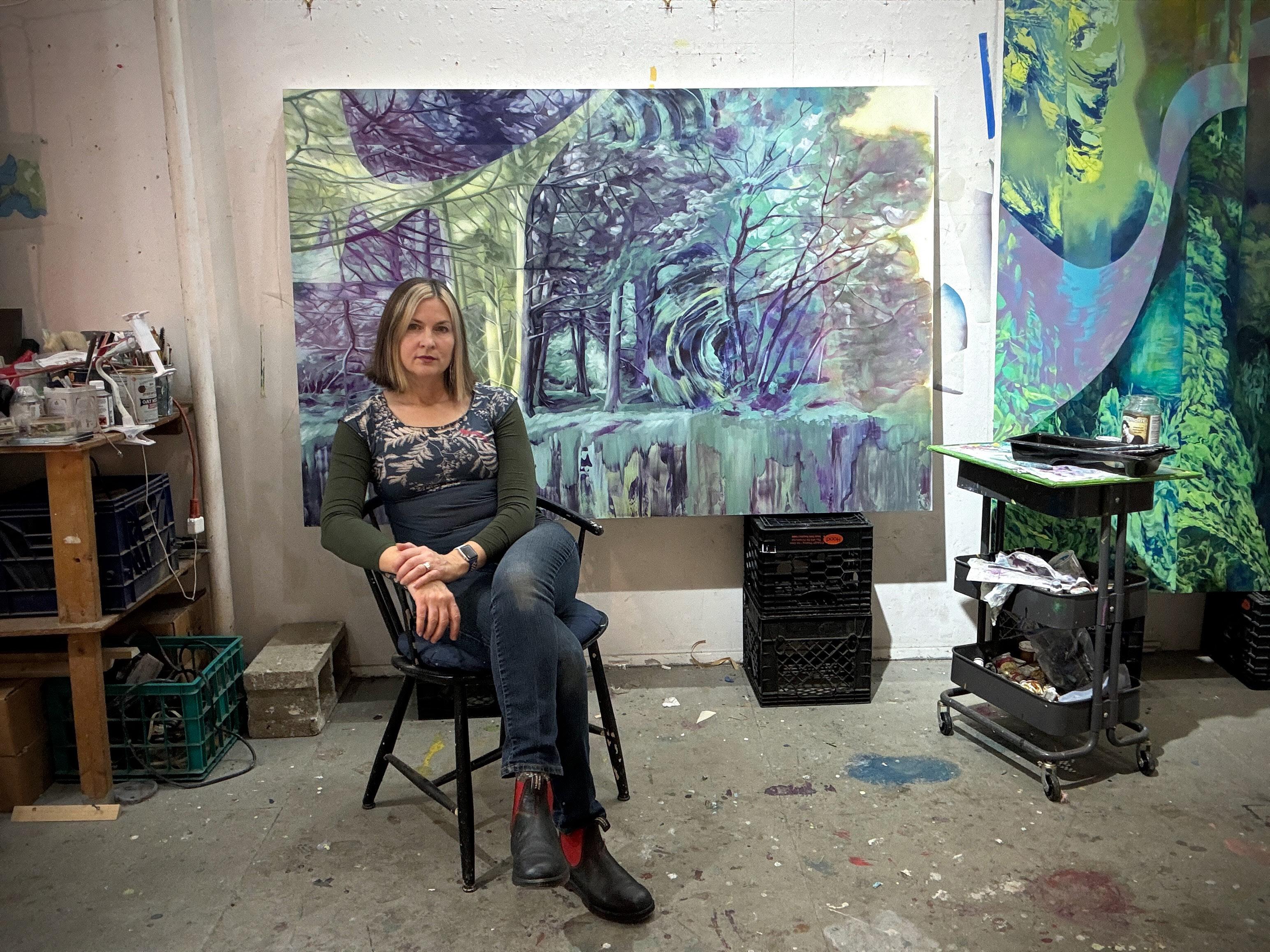
Copyright © 2024 | Catalog Design by Amy Archambault | All Images Courtesy of Will Howcroft
Cristi Rinklin is represented by Ellen Miller Gallery, Boston
